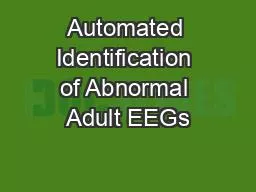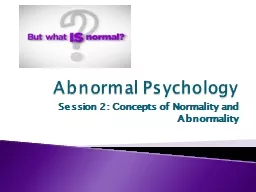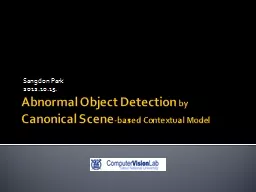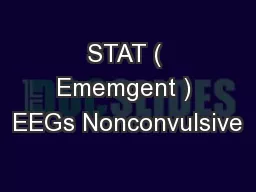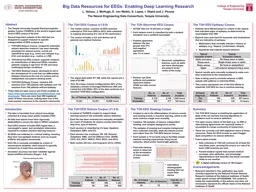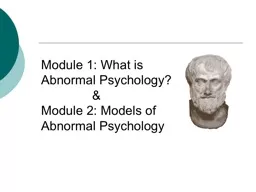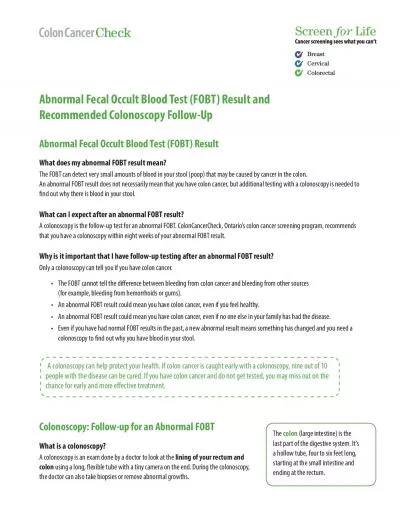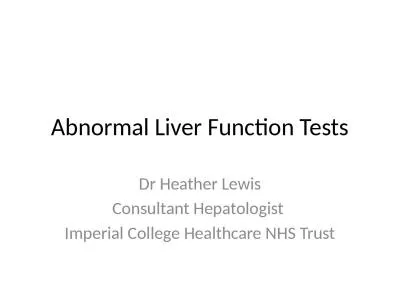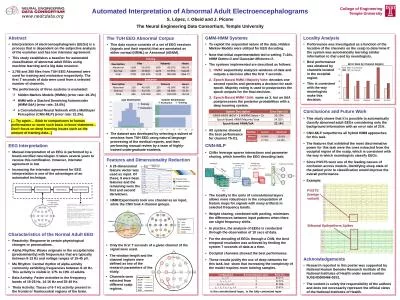PPT-Automated Identification of Abnormal Adult EEGs
Author : discoverfe | Published Date : 2020-10-22
A Thesis Proposal by Silvia López de Diego Neural Engineering Data Consortium College of Engineering Temple University Philadelphia Pennsylvania USA Abstract The
Presentation Embed Code
Download Presentation
Download Presentation The PPT/PDF document "Automated Identification of Abnormal Adu..." is the property of its rightful owner. Permission is granted to download and print the materials on this website for personal, non-commercial use only, and to display it on your personal computer provided you do not modify the materials and that you retain all copyright notices contained in the materials. By downloading content from our website, you accept the terms of this agreement.
Automated Identification of Abnormal Adult EEGs: Transcript
Download Rules Of Document
"Automated Identification of Abnormal Adult EEGs"The content belongs to its owner. You may download and print it for personal use, without modification, and keep all copyright notices. By downloading, you agree to these terms.
Related Documents

